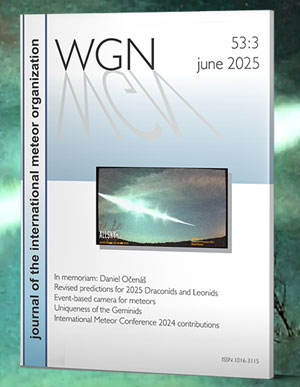We encourage all observers to use the electronic visual observation form. This will increase the efficiency of data processing significantly. The information gathered through this form is used to compute a live ZHR graph.
First-time observers are adviced to read through the visual observing sections of this website before observing.
Bob Lunsford explains in this week’s Meteor Activity Outlook:
The Leonids (LEO) will be best seen from November 17 through the 19th. The Earth passes closest to the node of comet Temple-Tuttle late on the 17th (Universal Time). The best chance for enhanced activity will most likely be near 0445 UT on the 19th. This timing favors Western Europe and northwestern Africa. From the western hemisphere, northeastern South America and eastern North America may see enhanced activity as the radiant rises in the east on Saturday evening/Sunday morning November 18/19. No one knows exactly the strength of this peak.
Optimistic forecasters are predicting rates of 2-3 Leonids per minute for a short time centered on the peak. Unfortunately these Leonids will most likely be faint so those viewing from urban sites will not be able to see much at all. Other locations than those mentioned above should watch for activity late in the morning while the radiant is high on the dates mentioned above. The radiant is located at 10:12 (153) +22. This position lies in northwestern Leo, just one degree southwest of the third magnitude star Aldhafera (Zeta Leonis). The radiant rises near 2300 (11:00pm) LST and is best placed in a dark sky just before the onset of morning twilight. At 71km/sec., the average Leonid is swift.





 You saw something bright and fast? Like a huge shooting star? Report it: it may be a fireball.
You saw something bright and fast? Like a huge shooting star? Report it: it may be a fireball.  You counted meteors last night? Share your results with us!
You counted meteors last night? Share your results with us!  You took a photo of a meteor or fireball? You have a screenshot of your cam? Share it with us!
You took a photo of a meteor or fireball? You have a screenshot of your cam? Share it with us!  You caught a meteor or fireball on video? Share your video with us!
You caught a meteor or fireball on video? Share your video with us!